 |
||||
High Arctic ... The Trip of a Lifetime
from GALAPAGOS TRAVEL |
||||
About Our: About: Natural History of the Galßpagos Special Stuff: Special Trips: |
Svalbard/Spitsbergen & the High Norwegian Arctic The Arctic and North Atlantic islands and coastlines offer some of the finest scenery and wildlife experiences in the world. Visitors to the region can witness enormous colonies of seabirds thronging the cliffs and shores, and enjoy the thrilling antics of whales and dolphins at sea, and seals and walrus hauled out on the rocks and ice floes. You may even encounter the very symbol of the Arctic - the Polar Bear. Though remote and sparsely populated today, many of the places we explore have been inhabited in the last 5000 years, and thousands of unique prehistoric and historic sites are a testimony to the thriving cultures of the past. Spitsbergen (Svalbard), with its rugged mountains, sweeping tundra, ice caps and glaciers, is a true High Arctic archipelago, and only 500 miles from the North Pole. Its abundant wildlife was once a huge draw for whalers and trappers but now discerning visitors are discovering the attractions of huge Arctic seabird colonies and the chance to enjoy and photograph species like Walrus, Reindeer, Arctic Fox and of course, Polar Bear.
Mid-summer at these latitudes the sun will not set, providing endless photographic possibilities: Spitsbergen at midnight |
|||||
 |
||||||
Most of Svalbard's 62,000 sq km are unspoilt and incredibly beautiful, with no roads outside of the 2 settlements - Longyearbyen with 2,000 residents, and the Russian community of Barentsburg with 1,000 residents. The area is best explored by ice-strengthened expedition ship, using Zodiacs for shore landings. The coast is mostly ice free in the summer and colorful wildflowers, mosses and lichens abound. The photographic opportunities are stellar as one explores the surreal landscape of fjords, glaciers and icebergs, and the extraordinary wildlife that makes its home here. Galapagos Travel first began traveling to Spitsbergen in 2001, and began sharing it with our own explorers in 2004, offering the occasional group expedition since that time, most recently in 2011. At present we have no plans to offer a group departure to Spitsberen in the future. The reason for this is nothing to do with Spitsbergen, but rather our own limited time and not wanting to "spread ourselves too thin." On the contrary, during the 10 years we have been venturing to Spitsbergen it seems that the bear and walrus sightings are getting better each year! Selecting an Expedition Much like the Galapagos, or Antarctica, many expeditions are short - often just 7 nights. That's ok if that's all the time you have, but it will likely leave you wondering what you missed. To really get a feel for the area, and increase you wildlife viewing possibilities we suggest a longer voyage. The archipelago is vast, and you don't want to rush the experience! The various Polar Tour Operators we will recommend are all experts in the region. They use ships with the highest safety ratings, with highly experienced crews and expeditions teams. Each operator has different names for their programs, but generally speaking the shorter voyages will be more restricted to the western and north-western coast of Spitsbergen. The longer voyages will either wrap around and hit more of the northern coast, or late in the season might even circumnavigate the archipelago. Of course all routing and plans are subject to ice conditions and weather. By late August most ships depart Spitsbergen, often with journeys that visit the eastern coast of Greenland, finishing with a stop in Iceland, before returning to the Antarctic for another season in the far south. |
||
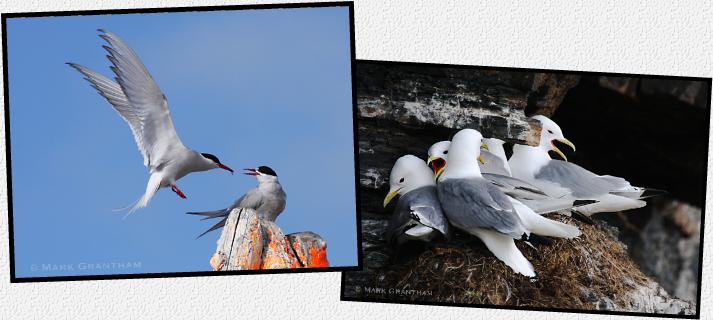 |
||
June, July or August? The Wildlife Experience... Pelagic whale species such as Humpback, Blue, Minke, Fin and Greenland (Bowhead) are possible. Keep your eye out for Narwhal, which on rare occasions pass through these northern waters in July. There is a decent chance to see Beluga in the southern fjords. Harp Seals congregate and molt off some of the southern islands, with Ringed Seals, Bearded Seals, and Hooded Seals all being more common in the central and northern archipelago. There are fantastic bird cliffs where Black-legged Kittiwakes, Northern Fulmars, Glaucous Gulls, and several species of alcids breed, including Dovekie (Little Auk), Black Guillemot, BrŘnnich's Guillemot, and Atlantic Puffin. Along the rocky shores watch for nesting Arctic Terns and Arctic Skuas. Inland you might see goose colonies - Pink-footed, Barnacle, and Brant - along with Common Eider, King Eider, Red-throated Loons, Long-tailed Ducks, Red Phalaropes, and Svalbard Ptarmigan. Ivory Gulls breed farther inland although we are likely to see them foraging along the sea ice. The region has one of the highest concentrations of Polar Bears, which are most likely encountered along the western and northern coasts of Spitsbergen, and hunting along the ice edge. One has to work a bit harder for the wildlife here, but once seen it is nothing short of spectacular! |
||
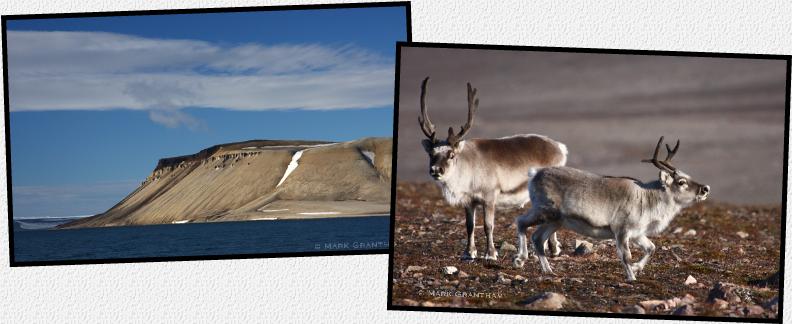 |
||
Expedition Logistics... Flight time between Oslo and Longyearbyen is roughly 5 hours, with a morning departure typically getting you to the island in plenty of time for an afternoon boarding of your expedition ship. Your Tour Operator will likely meet participants at the airport and transfer you the short distance to either the ship dock or town center. Expedition ships typically board passengers around 4 or 5pm, sailing out of the Fjord Isfjorden by early evening. The sea in this area is usually quite calm, and owing to the shallow depth and northward flow of the Gulf Stream, the climate is milder than one might expect so far north. Of course you might also prefer to arrive in Longyearbyen a day early and spend a night in this northern outpost - Longyearbyen bills itself as the northernmost town in the world. Accommodation options range from a small Radisson Blu Hotel to several simple guesthouses. The small town is colorful and its environs are bright with wildflowers beginning to bloom, and Svalbard Ptarmigan (a subspecies of the Rock Ptarmigan) and Snow Buntings (the only songbird this far north) nesting on the outskirts. Strolling around this former mining town you might well cross paths with Svalbard Reindeer (an endemic sub-species). The Svalbard Museum, located in the Science Centre, the Spitsbergen Airship Museum, and the parish church are well worth visiting. At the conclusion of your expedition cruise it is typically possible to catch a mid-day flight back to Oslo the same day (disembarkation is usually around 8am). |
||
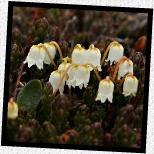 |
||||||||
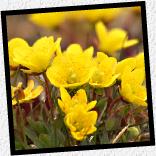 |
||||||||
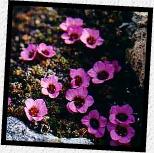 |
||||||||
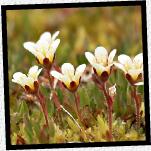 |
||||||||
Expedition Cruise |
||
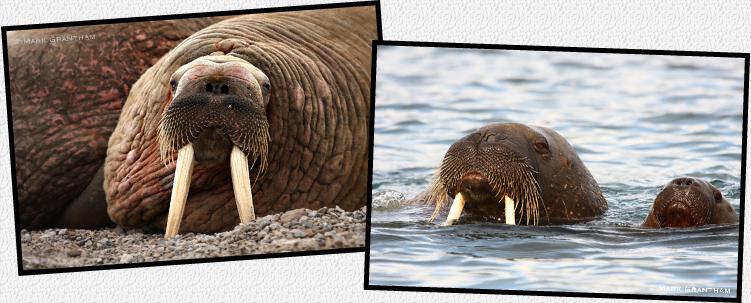 |
||
|
|||||||||||
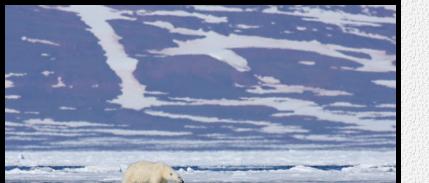 |
||||||
"We had a wonderful time. 3 outstanding polar bear encounters, many other excellent wildlife viewings --belugas, fox, reindeer, walrus, birds birds birds birds, good companion travelers from around the world, amazing expedition team (how many times do you get to travel with 2 Nobel Peace Prize winners?), comparable to our Galapagos trip... " Mary & Mark - Spitsbergen July 2014 |
||||||
 |
||||||
"The trip was fantastic. Sunshine every day, temps always in the 40's or 50's, sea bird and mammal life was everything we could have wanted - whales, polar bears, arctic foxes, reindeer, walrus, seals, and birds, birds, birds. The guides were terrific, the food always good and plentiful, the crew efficient and professional, and overall a wonderful experience." Harlan & Doris - Spitsbergen July 2014 |
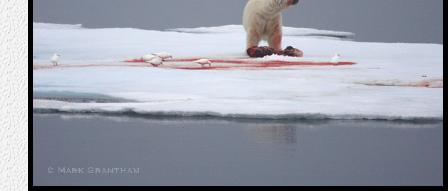 |
|||||
Expedition Ships |
||
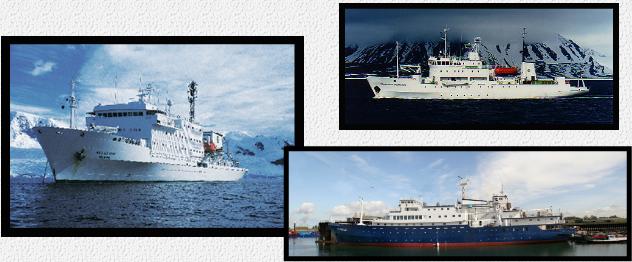 |
||
Sign me up! |
||
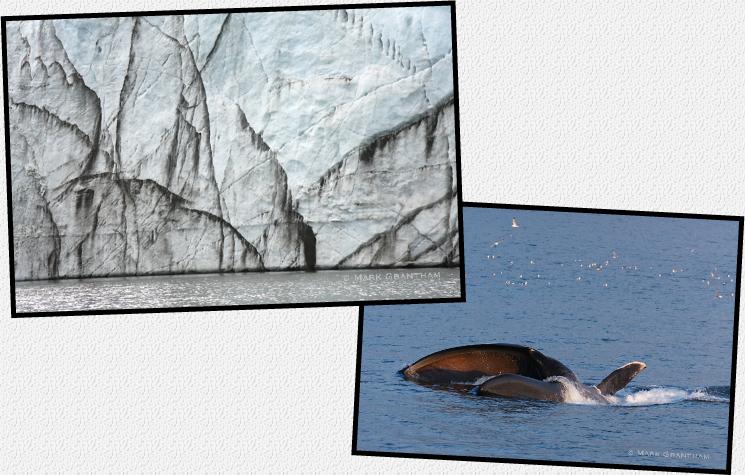 |
||
Other Arctic Destinations: Many of these northern areas have been settled for thousands of years by indigenous peoples, with waves of migration from eastern Siberia across te Bering Strait into North America. Much later, during the historic period, there has been further migration into some of the Arctic areas by Europeans. Iceland can feel and look more Arctic in setting than it actually is - only the tiny northern island of Grimsey touches the Arctic Circle. Iceland's coast remains ice-free and occasionally an expedition vessel will offer a one-week circumnavigation in the spring or fall. Wildlife highlights are typically enormous bird cliffs, including puffins and guillemots, plus shorebirds, geese and much more. Whale watching can be good, but also erratic. Today few vessels offer an extensive visit, instead starting their High Arctic season earlier, which has squeezed Iceland out of the schedules. Several vessels might spend a day or two here paired with more time in either Greenland or Spitsbergen. Iceland absolutely remains worth a visit! We offered expedition ship voyages here in 2004, 2005 and 2007. Greenland - the largest island in the world - is largely locked in ice much of the year. Both the southeast and southwest coasts are accessible during the summer months however. The southeast has been described by visitors as stark and profoundly beautiful - some of the most spectacular scenery they have ever encountered. Musk ox are often seen here. The southwest is home to the fishing industry and several small communties. The geology and flora are remarkable, and the colorful villages beautiful. Here Ilulissat Icefjord is recognized as a World Heritage Site for its spectacular beauty and the sheer number of icebergs it calves into the sea daily - a spectacle enjoyed both from land and by zodiac. Greenland is however relatively light on wildlife in our experience. There are bird cliffs, but those we have seen are not as spectacular as Spitsbergen, Iceland or Canada. Polar bears are rarely seen in the south. The southern coasts are visited by several Polar vessels each summer, and there is occasionally an ice-breaker journey in the north. Some voyages will pair the southwest with a journey through the Northwest Passage mid-summer. Canada's northeast, northern coast, and Northwest Passage, is as remarkable as it is historic - this in an area that fired many an imagination during the great age of exploration - connecting the Atlantic and Pacific Oceans through the Canadian Arctic Archipelago. Long rumored to exist it wasn't until 1906 that Roald Amundsen finally found a route through. Mid-to-late summer there are expedition options visiting the more rugged eastern half of the passage, often in conjunction with a visit to western Greenland. Visit Inuit communities, historical sites, and wildlife hotspots (ask about our best Polar bear experience ever, after 6 other trips to other parts of Arctic, that was had here). Other wildlife highlights might include musk ox, caribou, grizzly bear, walrus, seals, whales, and teaming bird cliffs. Most wildlife tends to be shy so one has to work a bit harder for the best sightings and photography. By late summer the barren flat tundra is ablaze in fall colors hugging the earth. Geologists rejoice here amid some of the oldest rock on earth. The Russian far-east has only recently begun to open up tourism and expedition cruising, and still on a limited basis, and subject to fickle government approvals. Two expedition ships visit the region most summers, offering several itineraries in the area. Main destinations are the Kamchatka Peninsula and Siberian Coast, and the High Arctic and Wrangle Island. Early season in the southern reaches is a paradise for keen birders, with many hard-to-find species quite possible. The same area is home to Kamchatka brown bears, often seen fishing the rivers and streams or browsing for berries and plants. Polar bears are typically range restricted to areas with snow and ice, so found only in the far north and Wrangle Island. Sparsly populated, there are just a handful of small villages and summer fish camps dotting the coastlines. Stellar whale watching is the norm, often including Grey, Humpback and Beluga. The backdrop is the towering snow capped volcanoes of Kamchatka. |
||
|
||||||||||||||||||||||||||||||||||||||||||||||||||||||||||||||||||

